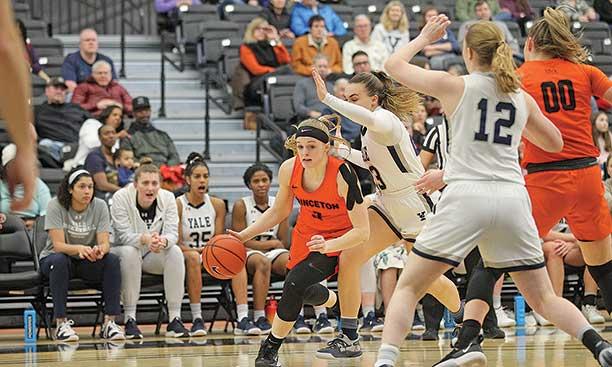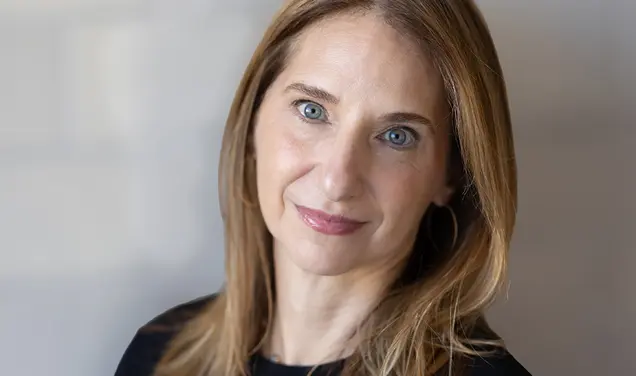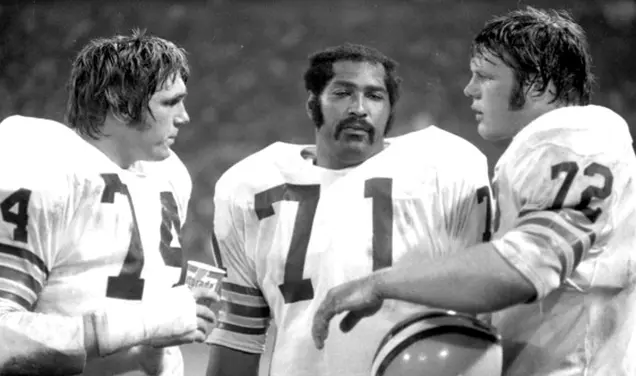Women’s Basketball: Alarie ’20 Sets Scoring Record to Cap a Remarkable Season
Despite returning a talented squad that had reached two straight NCAA tournaments, Princeton women’s basketball entered this season with cautious expectations from the Ivy League media. Penn earned as many points as the Tigers in the preseason poll, likely indicating uncertainty in the wake of a coaching transition from Courtney Banghart to Carla Berube.
Four months later, it was clear that no caution was needed. With a sweep of Columbia and Cornell in its final weekend, Princeton closed the season with a 26–1 record, including a perfect 14–0 in conference play. Although the Ivy League ranked as high as seventh among the nation’s conferences in the Rating Percentage Index, Princeton won every league game by at least 14 points and never trailed after halftime.
“I’m super proud of the team and how we took every game very seriously,” Berube, who was named the Ivy League Coach of the Year, said on her weekly podcast after the regular season. “They weren’t easy games, those opponents were really tough and they were competitive, and we worked really hard and came together. Our depth was really one of our strengths — on those back-to-back weekends you need strong depth — and we got contributions from a lot of players.”
In her penultimate game, Bella Alarie ’20 surpassed Sandi Bittler ’90 as the program’s all-time scoring leader with a second-half free throw. Alarie finished her career with 1,703 points, placing in the top 15 in Ivy history — a rank that would have been much higher had she not missed 13 games due to injury across her junior and senior seasons.
“I just wanted to get it the way I score normally, and I didn’t want to put any pressure or shoot anything I wasn’t used to shooting,” Alarie told the “Locked On Women’s Basketball” podcast. “Once I got it, it was great relief and a great moment. It means the world to me to be the person who set that record here at Princeton.”
Alarie was named the conference Player of the Year for a third straight season, and first-team All-Ivy for the fourth time, both Princeton records. She is widely expected to be selected in the WNBA draft — most likely in the first round — which would make her the second Tiger drafted in three years, following former teammate Leslie Robinson ’18.
Point guard Carlie Littlefield ’21 joined Alarie as a unanimous first-team All-Ivy selection, her second such honor, and scored her 1,000th career point in the same game Alarie broke the school scoring record. The duo combined for 31.2 points per game, but their larger contributions may have been to the Tigers’ defense, which held opponents to only 47.9 points per game — best in the nation by nearly four points.
The Tigers finished the season ranked No. 17 in the USA Today Coaches’ Poll and No. 22 in the Associated Press poll, with their only loss coming in overtime at No. 23/21 Iowa in November. And advanced metrics suggest that the rankings actually underestimated them: According to the power ratings of analytics website Her Hoop Stats, Princeton was the sixth-best team in the country, trailing only national powers Oregon, South Carolina, Baylor, Connecticut, and Maryland.
The Tigers had been projected as a No. 6-seed in the NCAA Tournament, which would have been the highest in Ivy League history, and could have given them a credible path to achieve another first by reaching the Sweet 16. However, they were not able to put their lofty rankings to the test in March, as their season came to an abrupt end when the conference and NCAA tournaments were canceled due to the novel coronavirus outbreak.












No responses yet